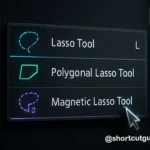Currency Converter
Why Currency Conversion Matters More Than You Think
Whether you’re planning an international trip, running an online business, or simply checking how much your country’s money is worth abroad, you’ll eventually need a currency converter. I’ve been working with international clients and financial platforms for over a decade, and I can confidently say—using the right converter can save you more than just time. It can save you money, prevent costly mistakes, and help you make smarter financial decisions.
In this article, I’ll break down what a currency converter is, how it works, what makes some tools better than others, and how you can use one effectively. I’ll also share some personal insights and practical examples I’ve picked up in my 10+ years of working around global finance and digital tools.
What is a Currency Converter?
A currency converter is an online or mobile tool that helps you calculate the value of one currency against another, using the latest exchange rates. For example, if you want to know how much 1,000 Indian Rupees is in U.S. Dollars, a currency converter gives you that figure instantly.
These tools use real-time or near real-time data from forex markets, central banks, or financial providers to keep rates accurate. The best converters also let you check historical data, track multiple currencies, or even work offline.
👉 Example: Last month, a client of mine in Europe wanted to pay me in Euros. Before sending the invoice, I used a converter to quickly check the Euro to INR rate. That small check helped me adjust the invoice slightly to avoid undercharging.
How Currency Converters Work Behind the Scenes
Most people think it’s just a calculator, but a currency converter pulls data from financial markets—similar to how stock tickers get updated.
Here’s a simplified breakdown:
- Data Collection: Converters tap into forex feeds, often from interbank markets, central banks, or providers like OANDA, XE, or Reuters.
- Bid/Ask Rates: Some platforms show the average rate, while others display buy/sell spreads.
- Conversion Formula: The converter applies the formula:
Amount in base currency × Exchange rate = Amount in target currency. - User-Friendly Display: Finally, the result is rounded and displayed for easy reading.
💡 Pro Tip: Always remember that the rate you see on a converter might differ slightly from what your bank or payment provider charges. They usually add a small markup.
Why You Shouldn’t Rely Only on Google’s Exchange Rate
If you type “USD to INR” or “GBP to EUR” into Google, you’ll instantly see a conversion rate. While this is handy, it’s not always the most reliable for financial transactions.
- Google shows mid-market rates (the average between buy and sell). Your bank or PayPal won’t give you that exact rate.
- No fee inclusion – Currency converters like OANDA or XE give you more detailed info, including historical data and spreads.
- Limited features – For travelers or businesses, you need a converter that allows multiple currencies, offline access, and even alerts.
👉 Personal Example: A friend of mine booked a hotel abroad using Google’s rate as reference. At checkout, the actual charge was 3% higher because his bank’s conversion was different. That’s why I always recommend double-checking with a professional converter.
Best Uses of a Currency Converter in Real Life
A currency converter isn’t just for finance nerds—it’s practical for everyone. Here are some real-world situations where it comes in handy:
- Travel: Before going abroad, you can quickly estimate how much local cash you’ll get for your money.
- E-commerce & Freelancing: If you sell on platforms like Upwork or Shopify, you’ll want to check rates before setting prices or receiving payments.
- Investing: Currency fluctuations can eat into profits when trading global stocks or forex.
- Studying Abroad: Students often use converters to manage tuition fees and living expenses.
- Import/Export Businesses: Importers calculate product costs in local currency to ensure profit margins stay intact.
👉 My go-to habit: Whenever I book flights internationally, I check both my home currency and the airline’s currency. Sometimes, paying in the airline’s native currency (based on conversion rates) ends up cheaper.
Features to Look For in a Reliable Currency Converter
Not all converters are created equal. If you want accuracy and convenience, here are features to prioritize:
- Real-Time Data: Updates within seconds, not hours.
- Historical Charts: Useful for spotting trends (great for businesses and investors).
- Multi-Currency Support: Essential if you deal with more than two currencies at once.
- Mobile App Access: Ideal for travelers or business owners on the go.
- Custom Alerts: Some apps let you set alerts when a currency hits your desired rate.
- Trustworthy Provider: Stick with well-known providers like OANDA, XE, or Wise.
Common Mistakes People Make with Currency Conversion
Even with the best tools, people often lose money because of simple mistakes. Here are the big ones to avoid:
- Ignoring Fees & Markups: The converter may show one rate, but your bank adds 2–4%.
- Converting at Airports: Exchange counters at airports often give terrible rates.
- Relying on Outdated Apps: Some free apps don’t update often enough, leading to wrong calculations.
- Not Planning Ahead: If you know you’ll need foreign currency, keep an eye on the rates weeks before your trip.
👉 Real Insight: When I worked with a client in the U.S., I noticed that by waiting just two extra days, the INR to USD rate shifted enough to save him nearly ₹15,000 on a large transaction. Timing really does matter.
Tips for Making the Most of a Currency Converter
Here’s how to use converters smartly instead of just casually checking rates:
- Compare Providers: Always compare the rate from your converter with your bank’s rate.
- Use Alerts: If you’re waiting for a favorable rate, set up alerts.
- Avoid Converting Small Amounts Too Often: Fees add up. Consolidate transactions when possible.
- Check Historical Data: Helps you decide if now is the right time to exchange.
- Keep Multiple Apps: I use OANDA and XE side by side for accuracy.
Conclusion: Make Smarter Money Moves with a Currency Converter
A currency converter is more than just a calculator—it’s a decision-making tool. Whether you’re traveling, doing business, or investing, using the right converter can save you money and headaches. From my experience, always go beyond Google’s simple rates and pick a professional tool with real-time updates and transparent data.
So, the next time you’re about to exchange money or get paid in another currency, don’t guess—convert smartly.
FAQs
1. Which currency converter is the most accurate?
Reputable tools like OANDA, XE, and Wise are considered highly accurate because they source data directly from interbank markets and update frequently.
2. Why is the rate different from what my bank charges?
Banks and payment providers often add a small markup (1–4%) on top of the mid-market rate you see on converters. This is how they make money on conversions.
3. Can I use a currency converter offline?
Yes, some apps allow you to download rates for offline use, which is especially useful when traveling without internet access.









